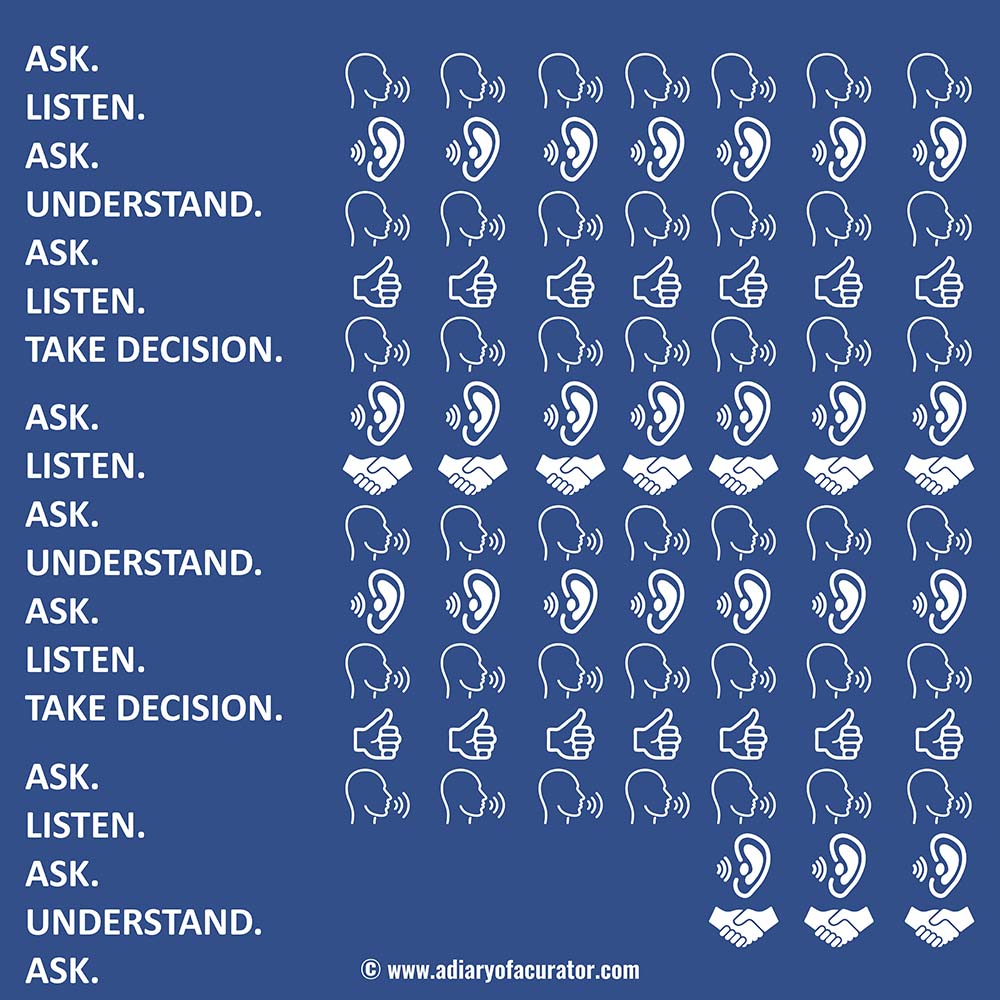Podcast
Episode 5: How to prevent falling into the trap of fake art?
The first time buyers should understand that ‘Art Market’ is like a mutual funds or share market. The major difference here is that you get to enjoy and connect with its emotions. The statutory warning, ‘Mutual Fund investments are subject to market risks, read all scheme related documents carefully’ also applies to the Art Market.

1. Research
Just like you research about the company before investing in it i.e. who are the directors, what are the products, their market reputation and so on. Similarly you need to research about the gallery, its brand value, who are the curators and promoters, artists associated with them, their history, their understanding of subject, art, techniques, art history, if the gallery is on rent etc. Whether the company (here individual curator or art dealer) have invested in its products – or just act as agent, as intermediaries or as dealer and is limited to trading.

2. Risk Involved
There is always a risk in investing with smaller companies who have limited investment, rented office, inexperience of promoter, unknown brand who is more prone to run away with the investor’s money. The same consideration exists for the art market too. With individual curators, art dealers and galleries there are many factors to consider.

3. Check Source:
From whichever source the client is buying art from, he should always ask the interior designer, architect, art dealer, curator or gallery representative the following:
- Name of the artist.
- Take out time and try searching for the artist, his/her style and biodata.
- If you do not have time, ask the interior, architect, agent, or curator to brief you about the artist, his style and technique.
- Do not just buy art to fill the walls with colours. It does not always have to blend with the furniture or walls. Blindly following the interior designer/architect and agreeing to whatever he tells you to put up on wall is not the only option. Art is very personal. You will have to enjoy it every day

Post understanding the artist and his style, if you like it,
- Check his/her artwork’s price online.
- Search about what this interior, architect, curator or art dealer is providing you with, its size and price – is it right? Fake art tend to sell at a lower price with several interesting stories.
- Check his biodata and check if and how personally he knows the artist.
- Current Market price/rate and at what price he is offering.
- Will they provide an authenticity certificate? Provenance? Why he bought it? If it is on consignment, go and meet the party directly. Ask him these questions.
Background check of the independent curator – where is his office, how much he has invested in art, who are his clients, where does he bring his artworks from?
Brand value of the gallery, since how many years are they in the business, check their website, how many exhibitions have they curated, art pieces sold etc.
For architects and interiors, their understanding of art. Just for the sake of filling the wall in low cost or they want your life to have a better living.
Such questions will prevent you from entering into illegal activities and falling into any trap. You are blindly following someone whom you trust but are not liable to trust.

So, whom should you connect to buy Indian Art?
- Any professional who has understanding of Art – in depth creative and technical knowledge.
- Any professional who has understanding of the visual art language and art history.
- Check their relationship with the artist and his/her family whose works they are selling to you.
- Their experience in the business. Experience of buying, selling, exhibiting and promoting will help you to judge the authenticity.
- Their market reputation amongst the art ecosystem i.e. Galleries, buyers, collectors, curators, auctioneers or fellow art buyers. Talk to your art collectors friends and know about the professional.
- Understand their investment/collection/stake in the artist’s works they are selling you or overall investment in their ecosystem.
These basic but most powerful leads will help you decide whether you should buy from that person or not.
Photos and Text © Chaitya Dhanvi Shah

